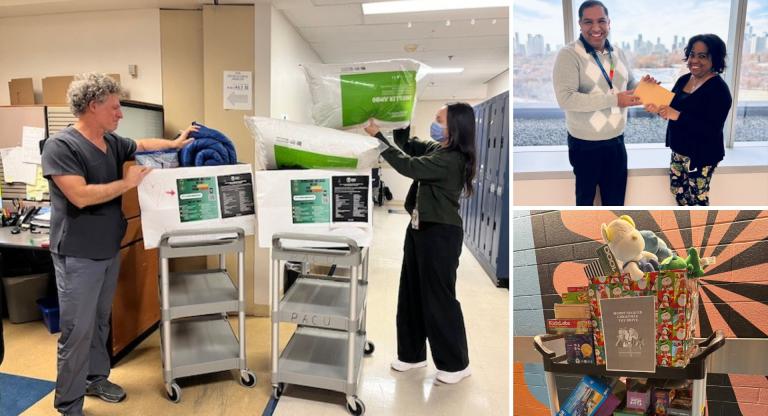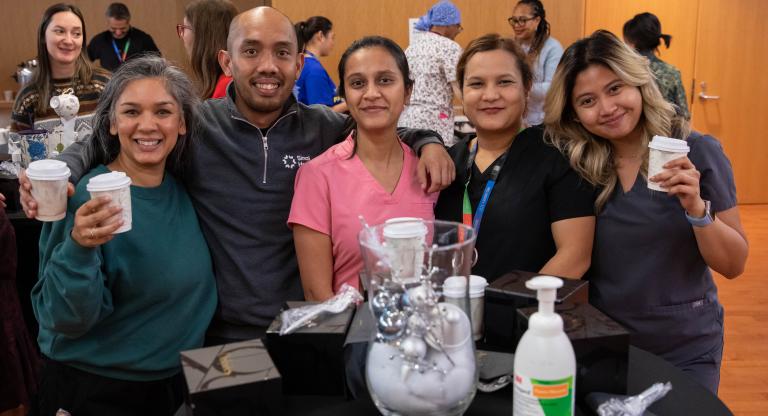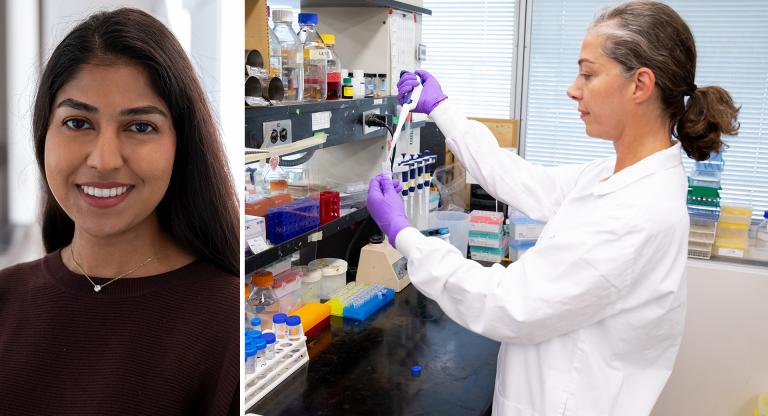‘It takes a village’: Q and A with Sinai Health’s Surgeon-in-Chief Dr. Ian Witterick

It was 1993, a young Dr. Ian Witterick stepped through the doors of Mount Sinai Hospital, fueled by an insatiable thirst for knowledge.
“I like using another part of my brain to think critically. How can I improve things? Whenever I am making a decision, to me the first thing I think about is how will this impact patients?” said Dr. Witterick. Little did he know that his desire to learn would pave the way for his remarkable journey to becoming Sinai Health’s esteemed Surgeon-in-Chief.
I like using another part of my brain to think critically. How can I improve things? Whenever I am making a decision, to me the first thing I think about is how will this impact patients?
Fast forward 30 years later, and it was this kind of thinking that lead Dr. Witterick to his position today.
We sat down with the internationally recognized surgeon-oncologist to learn about his motivation, the force behind his relentless dedication, and to get a glimpse into his aspirations for the future.
What motivates you to do the work you do every day?
I love taking care of patients with complex problems and trying to solve them with the help of so many caring professionals at Sinai Health. We have an unbelievably excellent team of nurses, administrative assistants, radiologists, pathologists, and colleague physicians, surgeons and anesthesiologists who are so helpful in managing our patient population. It really “takes a village” to manage everything from the simple to the complex that we see at Sinai Health.
What is your vision in your new role as Surgeon-in-Chief at Sinai Health?
We have 19 new state-of-the-art operating rooms filled with the latest technology and the best equipment. Our surgeons are at the forefront of innovation and look after some of the most complex inflammatory and oncologic problems in the province.
Our surgical program is known for many subspecialty areas, which we will continue to provide and look for new opportunities with the expansion of outpatient surgery to meet the needs of our community. The first priority will be to bring all of our operating capacity online with the hiring of more nurses, surgeons and allied health professionals.
You’ve been known for your efforts in training the next generation of surgeons. How do you plan to continue that in the coming years?
I absolutely love teaching at all levels. Seeing the light go off in a medical student’s eyes when they discover new knowledge or put two and two together is very gratifying. Teaching residents who are training to become specialists, or fellows who are already specialists but gaining extra training, is really one of the highlights of my career. They are eager to learn and it is such a pleasure to see them progress from year to year. I plan to foster this love of teaching in our surgical program as it is really gratifying to see learners “leave the nest” and go on to become leaders locally, nationally and internationally.
Reflecting on your own career in health care, what makes being at Sinai Health special?
I have had the opportunity to work at many hospitals throughout the GTA but Sinai Health is home. The people, the culture and the “can do” attitude are pervasive throughout the Hospital. In many ways, it has a community hospital feel while still maintaining the highest standards of academic medicine. It is easy to collaborate and innovate when people get along and have mutual respect for each other and the institution.
What is your best memory with a patient you helped care for?
There are so many that it is hard to pick just one. To see the pain and suffering that some patients endure with courage and dignity is heartwarming. The care and love that so many families provide is really amazing.
One example that comes to mind is a 20-year-old patient I just saw for his two year follow-up after removing a cancer from his lower jaw and replacing the bone with a piece of leg bone and connecting the leg bone blood vessels into his neck vessels. This was a 10-hour operation, which went very well and his postoperative recovery was remarkable to the point where he was “shooting hoops” with his friends 10 days postop.
Any last words?
We have a great leadership team, which is incredibly supportive of the surgical program and innovation. We are also very lucky to have the Lunenfeld-Tanenbaum Research Institute as a collaborative partner with the incredible science and discovery that takes place.
Learn more about Dr. Witterick and his appointment.











